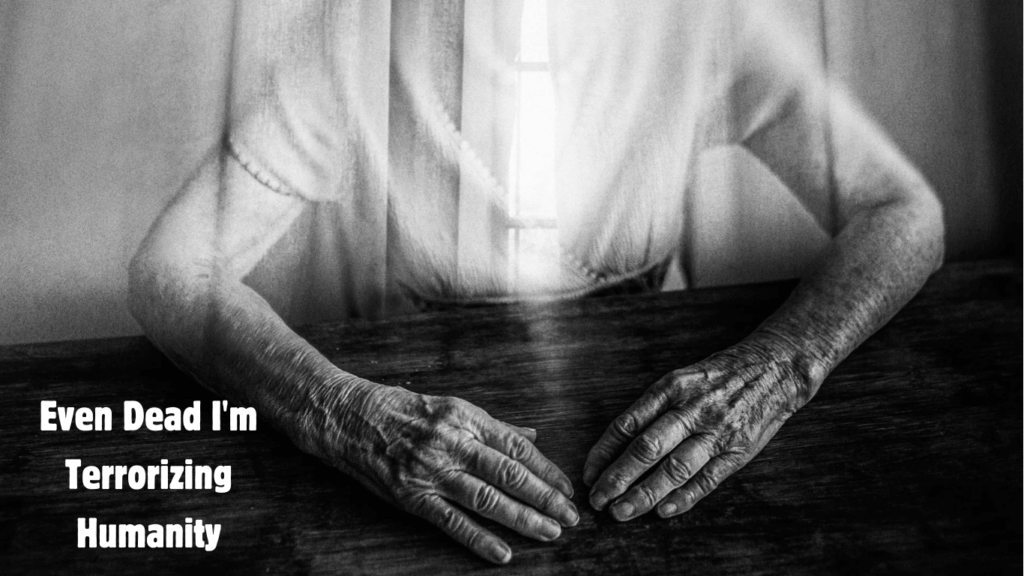The phrase “Even dead I’m terrorizing humanity” might seem haunting at first glance, but it speaks volumes about how certain figures or entities in history continue to impact us long after their deaths.
In this article, we explore how such figures have transcended death, shaping our collective fears, myths, and stories. It’s not just about the physical being of these individuals, but the fear they have left behind — the emotional scars that still resonate today.
Why Do We Fear the Dead?
Fear of the unknown is a part of being human. When someone powerful, cruel, or malevolent passes away, their legacy often lingers. Take, for example, historical figures like Vlad the Impaler, or notorious figures in pop culture like Freddy Krueger or Jason Voorhees. Despite their deaths, their legacies of terror continue to haunt movies, books, and popular discussions.
This emotional connection to the dead reflects more than just fascination; it is a reminder that some fears are deeply ingrained in the human psyche. These figures often become symbols of power, fear, and survival.
The horror they represent lives on through stories, whether shared by word of mouth or perpetuated in media. The legacy of terror becomes part of history, and people can’t help but feel the lingering presence of these figures.
Cultural Impact: How Terror Transcends Time
The phrase “Even dead I’m terrorizing humanity” can also be seen as a metaphor for the ongoing cultural impact of terrifying figures. Whether we’re talking about ancient folklore or modern legends, certain characters defy death by becoming iconic symbols of fear.
Their mythical presence continues to spark conversations, artistic representations, and even fears in the everyday life of people.
- Haunted Locations: Places associated with death or evil often become cursed or haunted, creating a constant sense of unease in those who visit or live nearby.
- Pop Culture Phenomena: Characters like Zombies, Ghosts, and Vampires aren’t just figments of our imagination; they reflect our deeper fears about mortality, power, and the afterlife.
Even when these figures are “dead” in the traditional sense, their influence continues, often manifesting in unexpected ways. Their cultural relevance endures as they become part of stories passed down through generations.
Why Does This Fear Matter to Us Today?
Understanding why certain figures still terrorize humanity even after their deaths goes beyond simple horror. It taps into our collective consciousness, influencing how we view life, death, and the unknown.
The psychological impact of such figures remains potent, serving as a reflection of our innermost fears and unresolved questions about existence.
For some, these figures are symbolic reminders of societal issues, including the abuse of power, control, and the loss of innocence.
The fear of the unknown that these figures represent is deeply tied to our instinct for survival, evolving over centuries to the point where terror and horror become avenues for exploring the most primal of emotions.
Embracing the Legacy of Fear
In embracing the phrase “Even dead I’m terrorizing humanity,” we also acknowledge the power of fear to shape society. These figures often symbolize the deep, unspoken fears that we carry within us, fears that can’t be easily shaken off.
The fear of death, loss of control, and the unknown are ever-present, and as long as humanity exists, these figures will continue to hold an eerie sway over us.
By studying these figures, we connect with a fundamental part of the human experience: the fight against fear.
Whether through the legends of old or the horror films of today, these characters represent the battle between light and darkness, safety and danger, reality and the supernatural. And as long as these fears remain, the dead will continue to haunt us in ways we never expected.
FAQs
Why do we continue to fear figures who have died?
The fear lingers because these figures embody deeply rooted fears such as death, power, and the unknown, which continue to resonate with us today.
How do myths and legends contribute to our fear of the dead?
Myths and legends give a voice to the dead, keeping their stories alive and spreading their fear through generations, reinforcing the cultural impact of terror.
Can the terror caused by historical figures be linked to societal issues?
Yes, many figures of terror represent societal fears, such as the abuse of power, control, or mortality, which remain relevant across time.
What role does pop culture play in keeping the fear alive?
Pop culture keeps the fear alive by continually resurrecting these figures in movies, books, and media, ensuring they remain a part of our cultural narrative.
What does the fear of death tell us about humanity?
The fear of death reflects our fear of the unknown, our need for survival, and our desire for control over forces beyond our understanding.
Conclusion
The phrase “Even dead I’m terrorizing humanity” highlights how some fears never fade. Figures, whether real or fictional, continue to haunt our collective consciousness, influencing our views on death, power, and the unknown.
These legacies of terror remind us of our shared humanity and the universal struggle against fear. While the figures themselves may be gone, their emotional and cultural impact endures, showing the lasting power of stories and the deep effect fear has on shaping our world.


